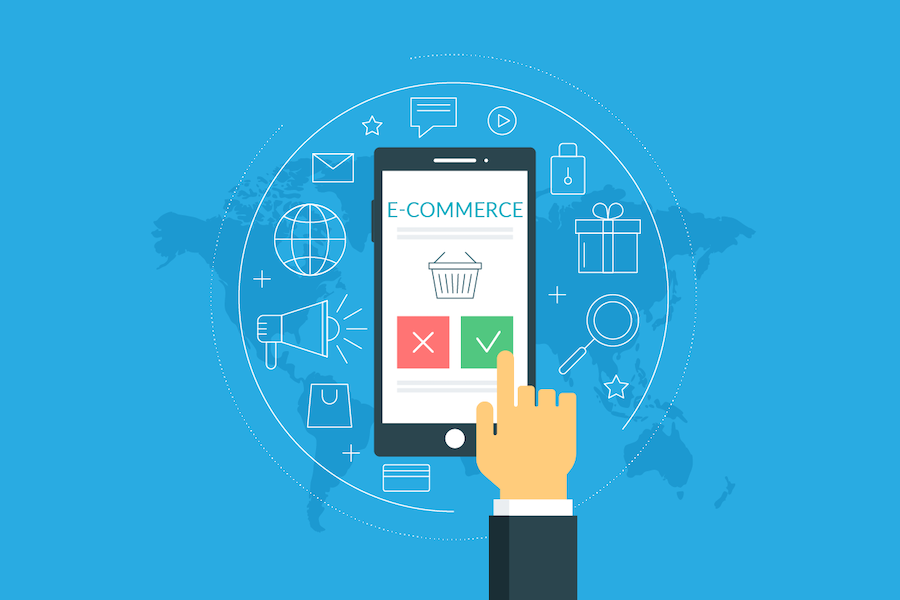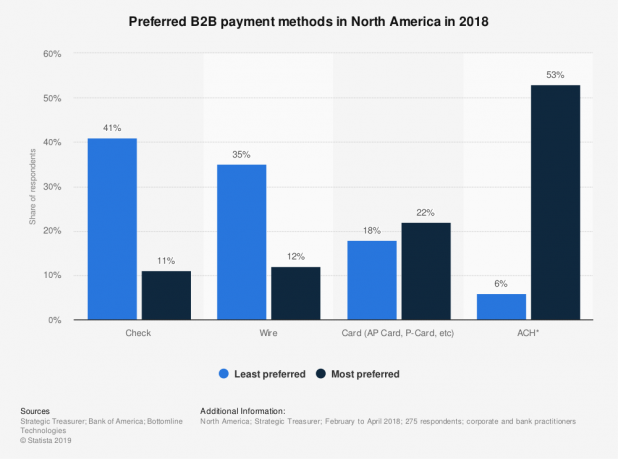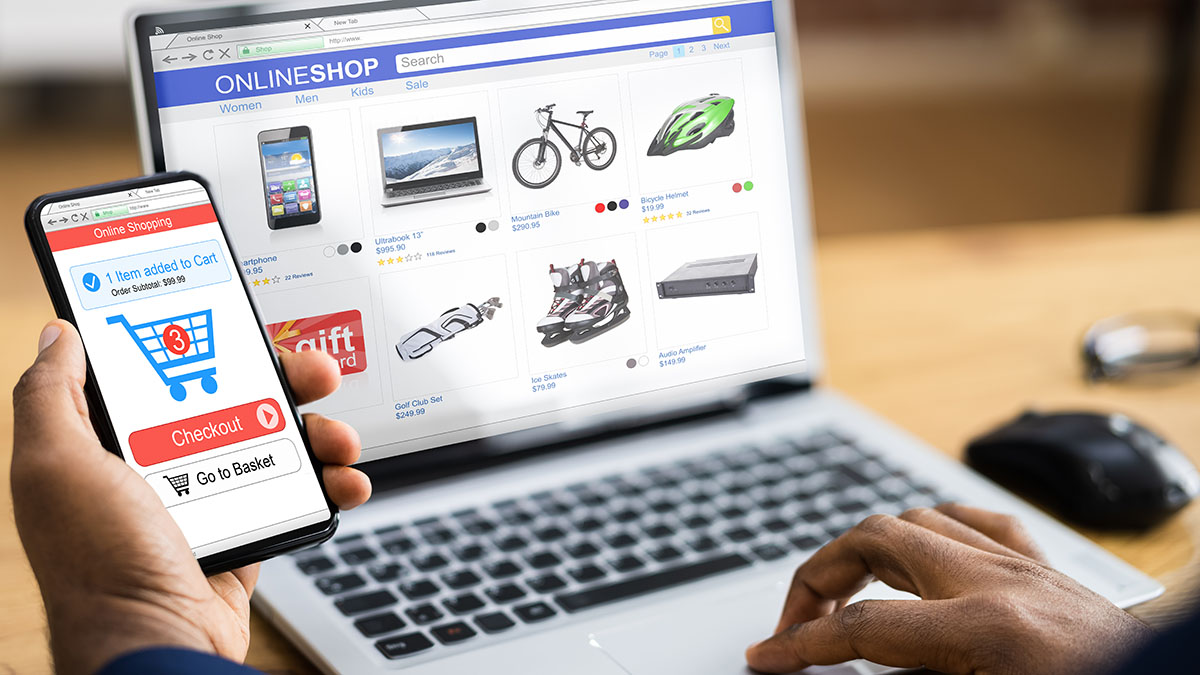The global B2B eCommerce market, with a value of $12.2 trillion in 2019, is more than six times bigger than the B2C market. In 2019, B2B eCommerce sales accounted for about 13% of all B2B sales.
But although the B2B eCommerce market is enormous, a 13% share of all B2B sales seems relatively low. However, due to COVID-19 and other circumstances, the B2B eCommerce market is likely to grow enormously in the coming years. Other circumstances include the increasing digitalization and automation of internal workflows. According to Forrester, B2B eCommerce sales will account for 17% in the US by 2023.
If you are a B2B business owner and want to stay competitive in the coming years, you need to expand your online presence. If your company does not have an online presence yet, you should urgently start building one.
It is an absolute necessity in these times.
Furthermore, there is no easier way to grow your business than through digital marketing. While other marketing strategies have high barriers to entry, it is easy to get started with digital marketing – you do not need that high a budget.
However, there are some hurdles with B2B eCommerce that every business has to overcome. If you want to know about the most crucial B2B eCommerce hurdles, you have come to the right place. In this article, we will discuss the five most important B2B eCommerce challenges for your business.
B2B is a personal business
The first issue is that B2B is a personal business. If you run a B2C eCommerce business, every customer pays exactly the same for a product.
But with B2B, it’s different. B2B thrives on negotiations and unique pricing based on how much a customer orders and how loyal a customer is. So, it can happen that one client pays a higher price for the same product than another one, just because he’s not that loyal.
According to a publication of Boston Consulting Group, B2B businesses often give discounts of up to 30% of the list price.
And that’s exactly what B2B customers expect – and they also expect it with B2B eCommerce. I don’t think that there’s a company which is willing to pay 30% more just because they can order a product online.
To solve this problem, you can create user accounts for your customers. When a customer is logged in with their account, they will only see the products they are interested in and the prices according to their customer status.
A great way to solve this problem.
B2B customers want to buy customized products
As with customized pricing, it is the same with customized products.
It is common in the B2B area that customers want specially configured products that are tailored to their specific needs.
Business partners usually discuss these modifications during negotiations. But online they cannot negotiate, they cannot even ask a question. In B2B buying, the purchasing process is MUCH more complex than with B2C.
But running an Online Store where customers can buy 100% customized products is nearly impossible.
So, what can you do?
First of all, you need to make sure that your overall business system supports orders in different formats. Customers must be able to place an order through phone, email or talking to a rep.
By implementing these business processes, you can ensure the flexibility that traditional negotiations offer.
Second, you need to allow customers to configure your products within your Online Store. In 2005, Conversion introduced their configurator for their shoes. Nowadays, you can see such configurators in several Online Stores on the web.
How can you do customer relationship management?
Customer lifetime value is extremely important. A loyal customer is worth much more to your company than a customer who only places one order.
You will always need to spend money to acquire new customers. Let’s say your costs to turn one lead into a paying customer is $100. If a customer orders products for $5000 over a lifetime, your profit is much higher than if a customer only orders products for $500.
Furthermore, existing customers spend 67% more on average than new customers. And – existing customers are much easier to convert than leads.
But how do you achieve a high customer lifetime value?
You can only achieve a high customer lifetime value with the right customer relationship management. The relationship with your customers and your partners is the blood that keeps your business running.
So, whenever you start a B2B eCommerce business, it’s important to use software with integrations like salesforce to get your customer relationship management under control.
This software connects different departments like marketing, sales or customer service with your customers, and organizes their notes, activities, and metrics. It makes sure that your employees have access to the same customer data at every time.
Complicated payment processes
Payments were a big reason why B2B eCommerce didn’t grow as fast as B2C eCommerce.
There are many more payment options for B2B than for B2C. Here are just a few examples:
- Credit Cards
- Bank Transfer
- Check
- Cash
- Payment Gateways
- Lots more…
Here’s a chart showing the most popular B2B payment methods in North America in 2018:
Furthermore, lines of credit and payment plans are an awesome way to build B2B customer loyalty, but they can be a real pain in the neck for account managers and bookkeeping departments.
All in all, B2B payment transactions are much more complex than B2C payment transactions.
Whenever you start a B2B eCommerce business, make sure to set up your payment processes effectively and efficiently.
User Experience
Even though B2B is mainly a personal business, B2B customers in eCommerce want to do most of the work themselves.
An Accenture study has shown that B2B customers go through 57% of the buying process on their own until they talk to a representative.
This means that they want to do most of the work on their own. On the one hand, this is great for your business.
It means that you can outsource 57% of the work just by creating your B2B eCommerce Online Store.
However, it also means that you need to create an awesome user experience. Every $1 invested in user experience results in a return of $100.
So, if you can create a great user experience, you can close more sales and increase your revenue. On the other hand, if you can’t create a great user experience, potential customers will leave your online store and you will miss out on revenue.
Conclusion
Building an Online Store for your B2B business is essential to stay competitive in the future. In 2023, 17% of all B2B sales will be B2B eCommerce sales. Now imagine how many B2B sales will be generated by eCommerce in 10 years.
However, if you want to build a successful B2B eCommerce store, you need to pay close attention to the things mentioned in this article.
If you can build a successful B2B eCommerce store, you’ll be able to dramatically increase your revenue.
___
by Moritz Bauer
source: SiteProNews



